County’s $840 million reform plan
June 17, 2014

The county, which pays millions annually for health care for retirees and their dependents, will save substantially in the years ahead.
In a move expected to save hundreds of millions of dollars in the decades to come, the Los Angeles County Board of Supervisors on Tuesday approved historic reforms in the way it pays for county retirees’ health care insurance.
County officials said the changes could save $840 million over the course of the next 30 years. Under the plan—which applies to those hired after July 1, not to current workers—the county will reduce the subsidies it provides for retirees to purchase health care insurance. The changes approved by the board also require retirees who are eligible for Medicare to enroll in the federal program; the county subsidy will be applied to a Medicare supplement plan.
The savings are projected be considerable. Currently, the county pays up to $1,953.41 a month to subsidize health care benefits for a retiree and his or her family. Under the new plan, a retiree under the age of 65 would receive an individual monthly subsidy of up to $918.46, which will be reduced to $370.89 once the retiree reaches 65 and can be covered under Medicare. The new plan is based only on individual coverage, but retirees can still purchase insurance for their dependents at their own expense.
“This represents one of the most significant improvements to our retiree health care benefit since the 1980s. It reduces our unfunded liability by 20%,” said William T Fujioka, the county’s chief executive officer. “It speaks to our board’s fiscal responsibility and fiscal discipline, and it’s a move that will help ensure our future financial viability.”
Fujioka said the support of county labor groups had helped make the new retiree health plan a reality.
“They were with us 100%,” Fujioka said. “We went to the table and negotiated this change, and they joined us in presenting this change to our L.A. County retirement board. As a consequence, we got a unanimous vote.”
The county currently pays about $487.8 million a year for retiree health care—with that obligation coming off the top of the budget each year, before other programs are funded.
Taking action now ensures the health of the retiree benefit in the years ahead, Supervisor Zev Yaroslavsky said.
“These reforms allow Los Angeles County to continue its leadership role in providing fair and responsible benefits to retirees, in contrast to troubles that have affected many other jurisdictions across the country,” Yaroslavsky said. “Without these changes, our health care program would have faced severe challenges going forward. As it is, we are doing the right thing for future generations of L.A. County employees and taxpayers.”
Posted 6/17/14
The whammy on Wilshire
June 12, 2014
As the 405 Project starts to move out of the limelight as L.A.’s most groused-about long-running transportation project, attention is shifting to a new construction hot zone: Wilshire Boulevard.
With a litany of high-visibility public and private projects in the works or on the horizon, the legendary boulevard is gearing up for a years-long building boom, particularly in the Miracle Mile.
“Seriously, if it’s not one thing, it’s another,” said Ginny Brideau, a consultant with The Robert Group who is handling community outreach for one of the projects, a new lane dedicated to buses at rush hour and available to all drivers at other times.
As part of that project, crews already are building special lanes and resurfacing Wilshire from Western Avenue to San Vicente Boulevard—work that entails closing lanes, detouring sidewalk traffic and putting up temporary no-parking signs.
Later this month, things start heating up miles to the west, as work begins on another bus rapid transit segment near the V.A. in West Los Angeles—close to where the 405 Project has been a high-profile challenge for nearly five years. Construction of the short (less than ½ mile long) bus lane on Wilshire between Federal Avenue and Bonsall Avenue will bring lane closures for the next seven months. That includes a period in which traffic will be detoured away from ramps connecting Wilshire to the Bonsall underpass. (Details are here.)
The Wilshire bus project is intended to create a faster-moving 12.5-mile corridor for rush hour riders between MacArthur Park and the Santa Monica border, and to improve traffic for everyone by tempting more people to ditch their cars and hop aboard public transit.
But it’s just the first leg of what promises to be an epic journey on Wilshire. Here’s a brief taste of what’s happening now, or coming down the road soon:
- The project to extend the Purple Line subway from Western to La Cienega Boulevard is currently busy with utility relocation, including after-hours jackhammering and saw-cutting. The action is expected to intensify in the months ahead when demolition begins on the first of 17 buildings set to come down to create staging areas for the project. Actual subway construction, including pile-drilling and station excavation, will start next year, according to a timetable presented at a recent community meeting. A more immediate impact: next week’s closure and relocation of Metro’s Wilshire/LaBrea customer service center.
- At the same time, private developers have started work on the Desmond on Wilshire, a new 7-story apartment structure in the Miracle Mile that’s expected to be finished by next summer.
- Then there’s the new Academy of Motion Pictures Arts & Sciences museum, designed by Renzo Piano, to be built on the old May Co. site at Wilshire and Fairfax Avenue and heading for a 2017 debut.
- Right next door, the Los Angeles County Museum of Art is developing plans of its own for a new building by Pritzker Prize-winning architect Peter Zumthor to open in 2023, replacing several aging buildings on the museum campus.
In the scheme of things, the Wilshire bus rapid transit project is expected to wrap up relatively quickly, by next year.
“I’m thrilled that it’s going in,” said James O’Sullivan, president of the Miracle Mile Residential Association. “It’s made a mess out of Wilshire, and 8th Street has become a jungle at times. But it’s short term.”
There’s a much longer road ahead for the subway extension.
“Our issue all along has simply been: we don’t understand how we can do nine years of this, 24/7,” O’Sullivan said. “We know it’s coming. We know it’s going to go in. We have lots of questions.”
Complicating matters is the sometimes confusing welter of agencies with a piece of the action: the county is building the bus lane from Federal to Bonsall, the city is constructing the rest of the bus rapid transit project, Metro is in charge of building the subway and is funding much of the bus lane work, utility companies are out in force moving lines in support of a variety of projects, and the Los Angeles Police Commission is responsible for canvassing residents and businesses when a project needs an exemption from work hours requirements under the city’s noise ordinance.
In the midst of all that, consultant Brideau said she understands how people feel when they experience problems: “You don’t care who it is, you just want it to stop.”
She recently came to the rescue of a toy store owner who arrived one day to find that a contractor had unceremoniously installed a portable restroom right in front of her business. Brideau also has been known to remove no-parking signs left up too long after bus lane work has concluded.
Calls to the bus rapid transit project’s hotline—(213) 922-2500—are promptly returned, Brideau said, and so are messages left on its Facebook page.
As for the subway, project director Dennis Mori acknowledges there’s a lot going on, but said the results—new transportation and cultural facilities that will provide a broad public benefit—will be worth it in the end.
“We look forward to the opportunity of integrating our plans and construction activity with the other projects,” Mori said. While there’s lots of coordination ahead, he said, the agency has been there before on other successful endeavors.
“We’ve had those experiences in the past,” he said, pointing to collaborative work between Metro’s Red Line subway team and the group building the Hollywood & Highland center. “We had very busy schedules and both parties worked very closely together.”
Posted 6/11/14
New CicLAvias to hit the road
June 12, 2014
L.A. has tasted CicLAvia, and it wants more.
In early 2010, as preparations were being made for Los Angeles’ first car-free, open streets event, Santa Monica organizers were brainstorming doing the same thing in their city. While CicLAvia blasted off that October, quickly drawing crowds in excess of 100,000, Santa Monica’s plans never got rolling.
Cynthia Rose, director of the bike advocacy group Santa Monica Spoke, said that despite having an active cycling and walking community, her city simply didn’t have enough resources.
“We were not as far along and just did not have the money that CicLAvia had,” says Rose.
Enter Metro.
A year ago, the transportation agency launched a grant program to fund open streets events—closing streets so people can bike, walk and frolic freely—with the goal of spreading the CicLAvia love to more places. Nearly two dozen applications were received in April, and 12 were accepted in the first cycle of grants made public this week. Pending approval by Metro’s Board of Directors, the agency will spend $4 million during the next two years to bring 12 events to places like Santa Monica, Pasadena, Long Beach and the San Fernando Valley.
Rose says she’s excited that her city will now get a chance to put its unique mark on the rapidly-expanding open streets movement, which was initially inspired by mid-1970s ciclovias in Bogotá, Colombia. (“Ciclovia” translates roughly to “cycleway.”)
“This is something that the community is ripe for and really wants,” Rose says. “Ours is going to be more like a big street festival. It’s for everyone to share the street.”
The Santa Monica gathering is being planned for spring or summer of 2016, to take advantage of the excitement surrounding the opening of Expo Line Phase 2, which will extend the light-rail train from downtown L.A. to the coast. Rose hopes the event will highlight some of the investments that Santa Monica has made to improve bicycle and pedestrian infrastructure, including the Bike Center and L.A. County’s first-ever bike share program, which should be up and running in two years.
Still, a large chunk of the grant money is slated to go CicLAvia itself, with funding recommended for six major events that the organization is producing or co-producing. CicLAvia spokesman Robert Gard said the plan is to use the Metro money to reach new locations, including the San Fernando Valley, where an event is planned for spring of 2015.
“We’ve done nine events on this side of the hill and by the time we get to the Valley it will have been 11 events,” Gard said. “With all the people who come from the Valley and beyond to our events, it just makes sense.”
The proposed Valley route still must be tested and finalized, but planners envision it going through North Hollywood, Studio City and Sherman Oaks, along Ventura and Lankershim boulevards. Those streets are home to scores of shops and eateries, a thriving arts community, beautiful vistas of the Hollywood Hills and more. The route also would connect with Metro’s Red and Orange lines and several bike paths, making it easy to get there and back.
CicLAvia would like to make the San Fernando Valley a regular destination, Gard says. Future events could target other locations further west.
The Metro grants will also help smaller towns join the open-streets movement, with tens of thousands of dollars going to places like Carson, Downey and Lawndale for more modest-scale events.
“Anybody who hopes for public consciousness of bicycling hopes a ciclovia makes it into their community,” says Lars Clutterham of the Downey Bicycle Coalition. He says that, unlike Santa Monica, “Downey is in the early stages of investing in bicycle infrastructure—there is none.” Clutterham hopes that the prospect of open streets events will prompt investment in pedestrian and bicycle improvements.
Viviana Franco is the executive director of Lot to Spot, an organization behind the Lawndale Community Bicycle Ride and Open Street Event, another grant winner. She hopes Metro’s program is a tipping point for low income communities that have largely missed out on the events. Franco says that’s upsetting because people in these communities are already cycling and walking to get where they need to go, but are unable to take full advantage of the health and community-building that can come with those activities.
“CicLAvia is amazing,” Franco says. “Let’s bring it to other neighborhoods; let’s bring it to neighborhoods where diabetes and obesity are rampant.”
Under direction from its board, Metro has sharpened its focus in recent years on “active transportation,” including cycling and walking. The agency formed a Bicycle Roundtable to collaborate with the cycling community and it has invested millions in infrastructure, with more to come.
Diego Cardoso, Metro’s executive officer in charge of active transportation, says open streets events benefit all types of transportation in the county. Not only do they get people out of their cars, he says, they also get some folks to try public transit for the first time.
“They take transit because they are going to use a bike at CicLAvia, but then they learn the places it can take them.” That, Cardoso says, makes them more likely to take buses and trains in the future.
The proposed grant awards go to the Planning and Programming committee next Wednesday before reaching the full Board on June 26.
Posted 6/12/14
Moving forward at Descanso
June 11, 2014
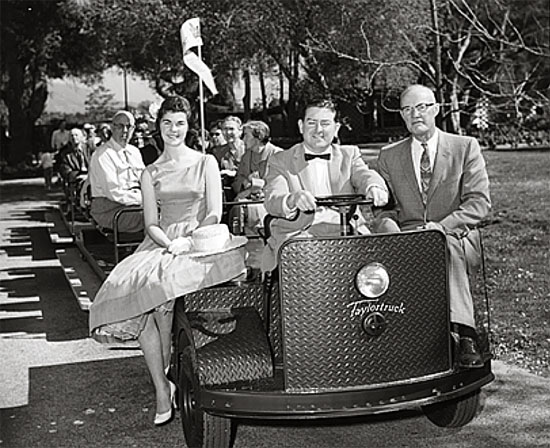
Trams have been a fixture at the gardens since the 1960s. But they've now come to the end of the road.
When an early morning fire engulfed a storage structure at Descanso Gardens in January, a bit of history went up in smoke. And maybe that wasn’t so bad, admits the garden’s executive director, David R. Brown.
Descanso’s vast botanic collection completely escaped the blaze that took firefighters about 2 hours to extinguish. But the flames devoured virtually all of the Los Angeles County facility’s tools and vehicles—including trams that had ferried visitors around the 160-acre grounds since the early 1960s.
While the trams were part of Descano’s longtime culture, they also were “very large and noisy and intrusive,” unable to deliver people to some of the garden’s most popular but secluded spots, according to Brown. That included the historic Boddy House, with a hilltop setting too challenging for many of Descanso’s elderly, disabled or simply out-of-shape visitors to reach.
In all, Brown said, only 8% of Decanso’s 250,000 annual visitors were boarding the trams, which would sit idle on busy weekends because they were too unwieldy for the garden’s crowded walkways.
In visitor surveys, Brown said, “mobility came up over and over and over again, that it’s not comfortable to walk here.” The fire, he said, “allowed us to rethink the notion of a superior visitor experience.”
Among other upcoming changes, Brown said, the trams will be replaced by electric-powered shuttles—essentially big golf carts—that will transport as many as six passengers into regions previously accessible only by foot. The shuttles will be free and compliant with the Americans with Disabilities Act—unlike the $4-a-ride trams.
The timing, Brown said, couldn’t be better. In the months ahead, Descanso will open a 5-acre exhibit in a previously-closed section of the gardens. Promotional materials say the undertaking will replicate and honor the region’s native landscape of oak woodlands, meadows and chaparral—an ecosystem that has been increasingly threatened by aggressive development. The new shuttles, he said, are key in helping the Oak Woodland Project find its audience.
“We wanted to give people access to the further reaches of the gardens,” Brown said, “so they can have a physical experience with a landscape that typified Southern California before it was explored and developed.”
Descanso gardens has long been considered one of Southern California’s premiere public gardens, perhaps best known for its thousands of towering camellias and expansive rose garden. Located in affluent La Canada Flintridge, in the shadow of the San Gabriel Mountains, Descano was founded by E. Manchester Boddy, the former publisher of the Los Angeles Daily News. He sold the property—including his 22-room mansion—to Los Angeles County in 1953.
Brown, the former president of Art Center College of Design, was named executive director of Descanso in 2005 by the Board of Supervisors.
Beyond the trams, he said other vehicles and equipment destroyed in the fire also will be replaced with more efficient, environmentally-friendly versions through insurance, county funding and foundation grants.
Still, everything post-fire isn’t coming up roses—or camellias, as the case may be. Damage from the fire, which apparently was sparked by an electrical problem, has been estimated to be as high as $750,000. And some of the items reduced to ash were priceless—including two old refrigerated boxcars owned by Boddy.
“Mythology holds that Mr. Boddy once used them to ship his camellias to customers in the Midwest and on the East Coast,” Brown said.
But overall, now that the smoke has cleared, the opportunities are clear.
“In a way, the fire was sort of a cleansing experience,” Brown said. “It kind of pulled us together.”
Posted 6/11/14
The L.A. River’s stormy past
June 5, 2014

After pounding storms in 1938 brought death and destruction, the river would be tamed with concrete.
For decades, the Los Angeles River has been ridiculed across the country as being as fake as a Botox brow, maligned in its own backyard as nothing more than a 51-mile concrete eyesore. But the river’s image is about to undergo a game-changing makeover, thanks to the Army Corps of Engineers’ recent endorsement of a $1 billion revitalization plan, which more than doubled an earlier recommendation.
The plan to transform an 11-mile stretch of the river from Griffith Park to downtown L.A. is intended to give people of all ages a healthy urban getaway, where they can relax and play. But back in the days when the river was first encased in concrete in one of the nation’s largest Depression-era public works projects, the federal government’s investment was about much more than improving lives. It was about saving them.
The unpredictable waterway had killed hundreds of people during a series of storms that had repeatedly devastated the region over the previous half-century. Two particularly vicious wallops in the 1930s forced local officials to seek federal help. The first, in 1934, killed dozens of people in a watery siege witnessed by folk songwriter and poet Woody Guthrie, who memorialized it in The Los Angeles New Year’s Flood:
Whilst we all celebrated
That happy New Year’s Eve,
We knew not in the morning
This whole wide world would grieve;
The waters filled our canyons
And down our mountains rolled;
That sad news rocked our nation
As of this flood it told.
No, you could not see it coming
Till through our town it rolled;
One hundred souls were taken
In that fatal New Year’s flood.
But it was the urgency generated by a second deadly storm, this one in 1938, which brought the biggest infusion of federal dollars through the New Deal’s Works Progress Administration to protect the safety of one of America’s fastest growing regions. Between February 27 and March 3 of that year, Los Angeles, Orange and Riverside counties were drenched by more than 10 inches of rain. The river jumped its banks and flooded a third of the city, killing 115 people, while destroying or damaging more than 6,000 homes. Total property damage was about $1.44 billion in today’s dollars. (See video footage of the flood here.)
The Los Angeles County Flood Control District, overseen by the Army Corps of Engineers, put 17,000 people to work on the job at the height of the Great Depression. Almost all of the work was done by hand. They moved 20 million cubic yards of earth, poured 2 million cubic yards of concrete, laid 150 million pounds of steel and set 460,000 tons of stone. The entire length of the L.A. River was channelized, along with 147 miles of tributary channeling. Also built were 5 flood control basins and 316 bridges.
The transformation of the river took 20 years to complete.
By the time it was finished, the L.A. River was unrecognizable from its natural state. About 90% of it had been lined with concrete along its sides and bottom. A natural riverbed was kept for the remaining 10%. Formerly a home for frogs, fish and birds, the river became a graffiti-scarred channel for urban runoff and garbage, sending pollutants of various sorts speeding towards the sea. It was immortalized in movies like Grease and mocked by comedian Conan O’Brien.
It was, in short, a river in name only—a reputation that restoration leaders are now determined to change, while maintaining the river’s ability to control flood waters.
In addition to the billion-dollar revitalization project, there are ongoing efforts to build a continuous 50-mile bike path and greenway along the river. Last summer, a pilot kayaking program was launched in the Elysian Park neighborhood. Based on its success, the L.A. City Council voted in February to make the program permanent, while expanding it to another section of the river, the Sepulveda Basin.
So for now, although the history of the L.A. River is still being written, a new chapter has opened.
Posted 6/5/14
Bogus tickets hit sour note
June 5, 2014

Pharrell Williams, performing before sold-out crowds last weekend, was joined onstage by Gwen Stefani.
Hundreds of Bruno Mars and Pharrell Williams fans found themselves “Locked Out of Heaven” at the Hollywood Bowl last weekend—and they were none too “Happy” about it.
Bowl officials estimate that several hundred would-be concertgoers were turned away from the sold-out shows when their tickets were rejected as counterfeits.
Faux ticket scams are, unfortunately, an increasingly common part of the live concert landscape. Some U2 fans were shut out of the Irish rockers’ Rose Bowl appearance in 2009. Two years ago, a number of Coldplay fans who had paid from $200 for $400 for their tickets found that they too had been duped with bogus tickets to the band’s shows at the Hollywood Bowl.
The profusion of counterfeit tickets this past weekend was widespread enough that, after the first concert on Saturday night, an anonymous Bowl employee was moved to spread the word on Craigslist in a post headlined: “Beware—I saw a lot of fake Bruno Mars tickets.”
“The event has been sold out for a while and tickets range from 200 for nosebleeds to about 1500 for front row,” the warning said, “so if someone is selling good seats for a small amount of money they are probably fake.”
In other words, watch out for deals that seem too good to be true. But be aware that even shelling out a lot for a ticket is no guarantee it’s genuine.
“It’s heartbreaking to have to turn away patrons who we know paid sometimes as much as four times face value for a fraudulent ticket,” says Gail Samuel, chief operating officer for the Los Angeles Philharmonic, which runs the county-owned Bowl under a lease agreement. “When we have a sold-out show like Bruno Mars, there is really nothing we can do to help them.”
With a series of major summer concerts ahead at the Bowl and other venues—including Beyoncé and Jay Z at the Rose Bowl and Paul McCartney at Dodger Stadium—the county Department of Consumer Affairs also has some timely advice for fans.
“A lot of these counterfeit tickets out there look very convincing, so don’t think that you can just look at a ticket and tell whether or not it’s fake,” says Dawnnesha Smith, community outreach manager for the department.
She advises consumers to buy directly from the venue’s box office or its primary ticketer (In the case of the Hollywood Bowl, that’s Ticketmaster.)
It’s best to pay with a credit card, she adds, because those purchases often come with added consumer protections. And “if you see any ads suggesting that you wire someone money to purchase a ticket, that is also a red flag. Once you wire money, it is nearly impossible to get it back so you never want to purchase an item using a wire transfer.”
“It all comes down to buying the ticket from a reputable source,” Smith says, “and being extremely leery of buying tickets online and on classified ad websites such as Craigslist.”
Ticketmaster has some tips of its own, including this one for enthusiastic fans tempted to show off their newly-purchased tickets on Facebook, Instagram and other sites:
“We cannot express this point enough, please do NOT take photos of your ticket stubs and post them on social media sites. This is the perfect way for scalpers to rip these tickets right off you.”
Posted 6/5/14
The (new) end of the trail
May 30, 2014
For years, hikers have been banned from Malibu’s Puerco Canyon Trail and the rest of a stunningly scenic 703-acre property in the Santa Monica Mountains, mostly owned by film director James Cameron.
According to Paul Edelman, chief of natural resources and planning for the Santa Monica Mountains Conservancy, visitors were met with barbed wire and security teams until a few years ago, when they were finally allowed to walk through the oak-studded property, home to a variety of wildlife.
Still, access has stopped short of the end of the trail. At one point along the way, hikers are met with a chain link fence that keeps them from connecting to the adjacent Corral Canyon Trail. And hikers on that popular 2.5-mile loop have been stymied by that same fence, which prevents them from heading into Puerco Canyon.
But that final barrier is about to fall: On Tuesday, the Los Angeles County Board of Supervisors approved a $6 million allocation to help purchase Cameron’s acreage. Also contributing to the purchase: $4.5 million from the Wildlife Conservation Board and $1.5 million from the California State Coastal Conservancy.
The new owner, the Mountains Recreation and Conservation Authority, will oversee the property with the goal of preserving open space, habitat and resources. Once escrow closes, a date for public access will be set.
The collective 24 parcels of land known as the Puerco Canyon Properties, formerly slated for housing development, represents a major piece of the geographic puzzle in Supervisor Zev Yaroslavsky’s longstanding effort to foster preservation and public access in the Santa Monica Mountains.
The property will dramatically increase access between 1000-acre Corral Canyon Park and the 7,000-plus-acre Malibu Creek State Park, Edelman said.
“It’s the last big piece in the Malibu State Park core habitat areas,” Edelman continued. “There aren’t too many big ownerships left in the Santa Monica Mountains. This is the last big sucker in L.A. County.” (The remaining large private properties in Ventura County are the 1000-acre Deer Creek Canyon property owned by the Mansdorf Family Trust and the even larger Broome Ranch).
The “last big sucker” is significant for more than its size. Contained within its borders are major sections of the new Coastal Slope Trail. This project-in-development includes a small portion of the existing Puerco Canyon Trail and will eventually run about 65 miles from Point Mugu State Park on the coast to Topanga State Park in Topanga Canyon.
Not only does the parcel facilitate new trails—its acquisition serves to preserve a delicate ecosystem. According to the coastal conservancy’s project summary for the purchase, the Santa Monica Mountains “encompass a rare biome that can be found in only four other locations on the planet.”
Vegetation and wildlife include native grassland, chaparral, coastal sage scrub, sycamore-willow woodland, oak trees and a wealth of animals, including mountain lions, bobcats, and gray foxes.
Said Edelman: “You could say that it probably has one of everything, animal-wise, with the exception of maybe salamanders. My guess would be 15 of the 19 snakes in the Santa Monica Mountains are down there, just because it’s so big.” The acquisition will also protect drainage areas that play an important role in the movement of wildlife in the area.
Not bad for a former pig farm. Along with its small enclave of luxury houses, Puerco Canyon was once home to a sprawling pig farm that existed into the 1980s.
That’s good for hikers too, Edelman said. “There’s a portion that has not been accessible to the public that has a whole system of neat little trails that were carved for the pig farm,” he said. While the trails were created for farm vehicles, they’re trail-ready for hikers and their dogs — or any pet pig that might choose to tag along.
Posted 5/30/14
L.A.’s cool summer hotspot
May 30, 2014
A crowd of 4,000 showed up to Grand Park for a salsa festival on Memorial Day, the unofficial start of summer. The dancers were sizzling, but the park is just getting warmed up— in the coming months, many more fun times are planned for downtown L.A.’s newest public space.
Park programming director Julia Diamond said she tries to cast a wide net when planning events.
“We go for a broad spectrum so that we can cater to a lot of different interests,” Diamond said. “We want people to have varied reasons to come into the park.”
The summer schedule includes three large events with smaller happenings that will take place on a regular basis. The first biggie is the 4th of July Block Party. After attracting 10,000 last year, Diamond is expecting closer to 25,000 in 2014. The event’s footprint will grow to match her expectation; several adjacent streets will be closed to accommodate the throngs. There will be DJs, live music, food and, of course, fireworks—but this year they’ll be shot from the roof of the Dorothy Chandler Pavilion so all of downtown can see the show.
After that, the next big date is July 26, when the park will celebrate National Dance Day with top performers in a variety of styles, plus a wet dance party in the park’s ever-popular splash fountain. Then, the final summer offering comes on September 28 when the Music Center presents “Universe of Sound: The Planets.” A huge tent with planetarium-style visual displays will be the setting for an interactive musical experience in which attendees will be able to conduct and play their own music as 132 live musicians perform Gustav Holst’s The Planets.
If you can’t wait until July, other fun is just around the corner—the first of four Sunday Sessions will take place this weekend, on June 1. The event will bring some of the top electronic dance music artists in SoCal to perform in a family-friendly environment so party people of all ages can get their groove on. And for those who want to create the beat themselves, “Drum Downtown” events offer percussionists of all skill levels a chance to beat the skins with guidance from pros. Equipment will be provided.
For the daytime crowd, “Lunch a la Park” brings a rotating cast of L.A.’s best gourmet food trucks on Wednesdays and Thursdays. After the workday, Grand Park’s Bootcamp can help work off any double bacon kobe sliders in which you may have indulged.
But sometimes families may just want to chillax at the end of a long summer day. The “Movies in the Dark” series hearkens back to the days of the double feature and adds games, contests and trivia competitions with prizes to the experience.
Not all events have been posted on the park’s website yet, so the best bet for those who want to attend is to keep tabs on the calendar or follow the park’s Facebook page.
It may sound like a lot of stuff will be going on, but Diamond says that the park has actually scaled back the number of events.
“We’re trying to get out of people’s way a little bit,” Diamond said. “We want people to use Grand Park just as a park.”
Diamond said the young park is starting to build solid regular attendance. The hot months of the summer are among the busiest, with the splash fountain offering a sweet way to beat the heat—and a safe place for kids to cavort while their parents kick back and sip iced lattes under palm trees atop the hot pink furniture.
Another major attraction is how photogenic the park can be. Between the Arthur J. Will Memorial Fountain, city hall and the gardens of blossoming flora from around the world, Grand Park has generated plenty of shutterbug enthusiasm, as can be seen on sites like Instagram, where its official account has more than 6,200 followers.
But Diamond hopes that when people leave they take more than snazzy snapshots with them. She wants Grand Park to become a place of nostalgia for Angelenos, a place they will remember years from now.
“I want to be in people’s memories at the end of the summer when they put that sweater on for the first time,” Diamond said. “I want them to remember that a high moment came at Grand Park.”
Posted 5/30/14
Searching a web of clues
May 30, 2014

Scouring social media sites, sheriff's researchers have put a serious crimp in hundreds of teen parties.
There are no bigger party poopers in town than a tiny team of web savvy sleuths in the Sheriff’s Department, who patrol social media looking for potential trouble, including jammed-to-the-rafters raves that promise alcohol and drugs to underage partyers, particularly teenage girls.
During the past few years, the little-known unit has “intercepted” and helped block 1,000 parties before they even got started, according Cmdr. Mike Parker, the department’s leading authority on social media and online communications.
Sometimes, Parker said, deputies are dispatched directly to doorsteps, where they warn adults that they’ll be arrested for contributing to the delinquency of a minor should the party go off as advertised on Facebook, Twitter or other social media sites. Other times, the deputies will join an online conversation among would-be celebrants with this buzz-killing greeting: “Thanks for the invite. See you there!”
As a result, the department’s proactive Internet strategy has short-circuited the assaults and neighborhood disruptions that often accompany raves—and saved public dollars that otherwise would be spent on patrols and prosecutors.
“If it’s being shared for all the world to see,” Parker said of the party promotions and other postings that raise red flags about public safety, “then it’s the social equivalent of standing outside of school with a bullhorn. There’s no expectation of privacy. But if, as a law enforcement officer, you’re pretending to be someone else, that’s where you get into that danger zone of Big Brother accusations.”
The notion of proactively scouring the web for possible crime clues has emerged on the public radar in a very different context in recent days. In the aftermath of last Friday night’s Isla Vista murders, sheriff’s officials in Santa Barbara have been questioned about whether they should have known more about the killer with whom they’d had earlier contact and who had posted provocative videos and rants. Authorities there have acknowledged that, while they were aware of Elliot Rodgers’ videos, they did not view them.
In reality, most local police agencies have yet to explore the potential of the Internet as a preemptive crime-fighting tool, one that requires training and staffing, just like any other specialized law enforcement job, says Parker, who emphasizes that he is not second-guessing Santa Barbara police.
“It’s not like a 911 call that you’re obligated to respond to,” Parker said the other day, as he prepared to deliver a social media presentation at the county’s annual leadership conference. “It’s a very different challenge. You have to go out and hunt, and you have to want to do it. You have to pride yourself on finding things.”
Parker, a 29-year-veteran of the department, is a nationally-recognized leader of that effort. Until his recent promotion as commander of the north county patrol division, he headed the Sheriff’s Headquarters Bureau, which included the new Electronic Communications Triage Unit. Today, he’s its consultant and evangelist.
The unit has two full-time members and some part-timers whose web work extends far beyond raves. Using “keyword” and “geo-tag” searches, they target issues that could touch a broad swath of society or a single family—from preparing for a flash mob that’s been promoted online to trying to rescue a suicidal teenager. Parker shared this story:
After an assault with a deadly weapon occurred in a particular neighborhood, one of the unit’s members began searching the web for postings by witnesses that deputies could interview. In the process, she discovered a posting by a neighborhood girl who was threatening to take her own life. She’d posted pictures on Instagram and revealed she’d been cutting herself.
A street sign in the background of one of the photos allowed deputies to zero in a possible home. On the first visit, no one answered. The second time, mother and daughter were both there, Parker said.
“That’s when the mom found out that her girl was cutting herself and wanted to kill herself,” he said, adding that the mother knew her teen was depressed but did not understand the depth of her despair. The girl was voluntarily admitted for mental health care.
Asked whether the deputies’ intrusion into the girl’s life could be seen as a breach of her privacy rights, Parker responded:
“A key element is that she is sharing what she is doing for the entire world to see, including a potential predator, who would see her vulnerability as something to exploit. Psychologists would call her actions an open cry for help. We heard her cries and came to help. Too often, people are afraid to get involved…and sadness and regret often follow.”
“We could probably keep someone busy fulltime just working on people who want to hurt themselves,” Parker said.
Looking to an increasingly digital future, Parker said he believes that a robustly staffed regional center should be created to help law enforcement officers scour the web for open source material that could produce investigative leads at any time of day, just like other kinds of multijurisdictional task forces.
“As I say that, I know civil libertarians get concerned,” he admitted. But he argued that people put information into the public domain for the world to see—“and I’m a member of the world.”
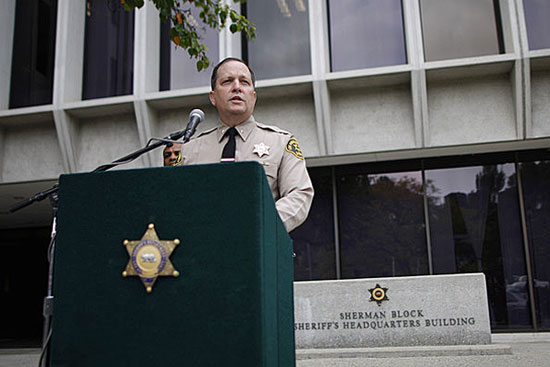
Cmdr. Mike Parker has been leading the way in using the Internet to proactively identfy potential trouble.
Posted 5/30/14




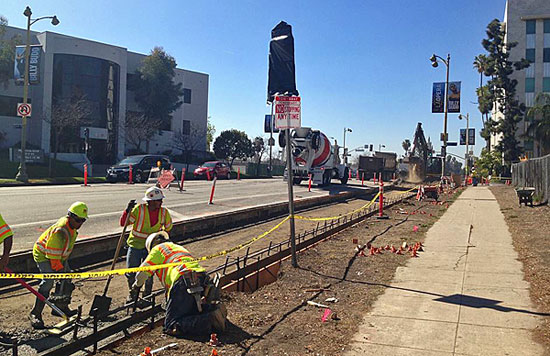
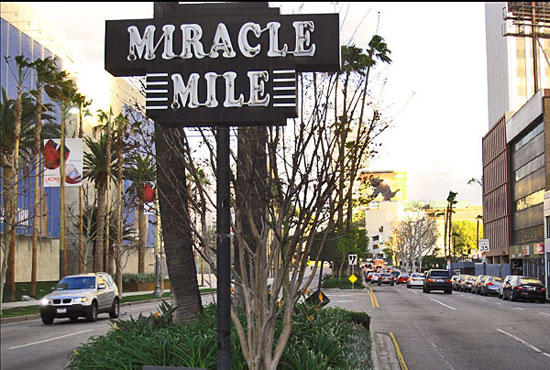


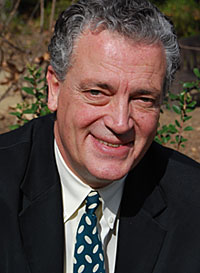
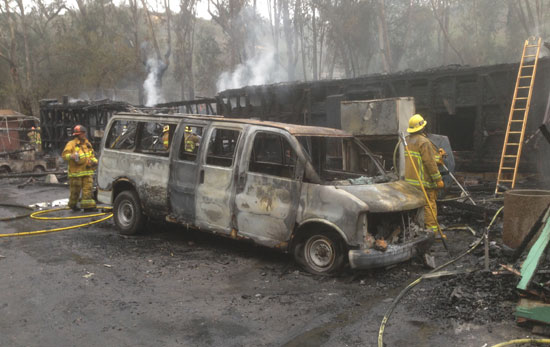
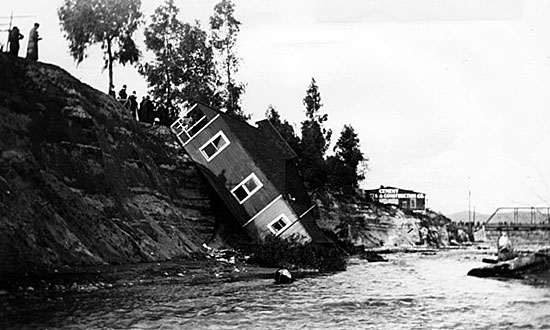
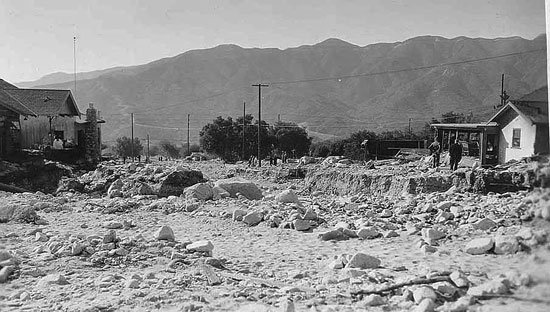
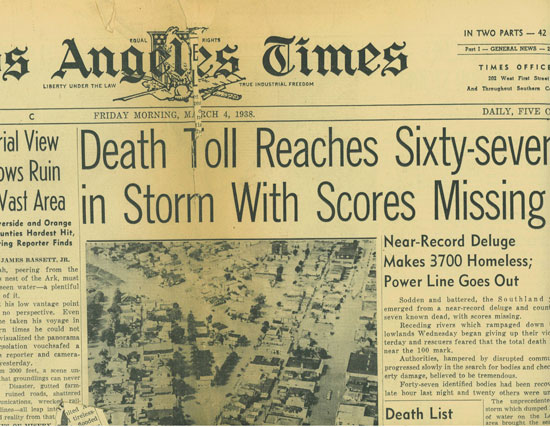
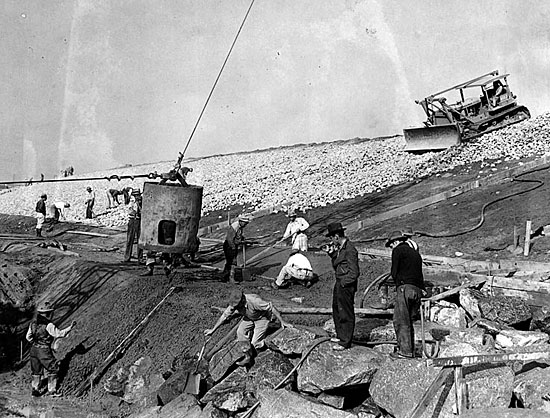
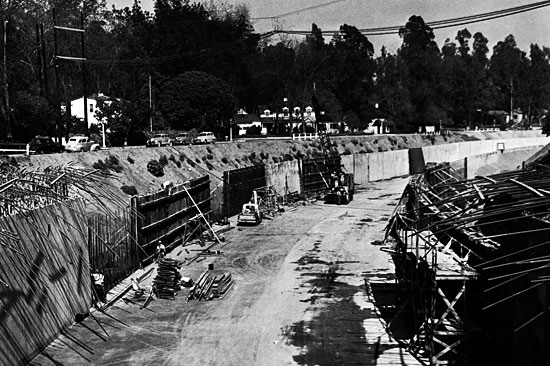

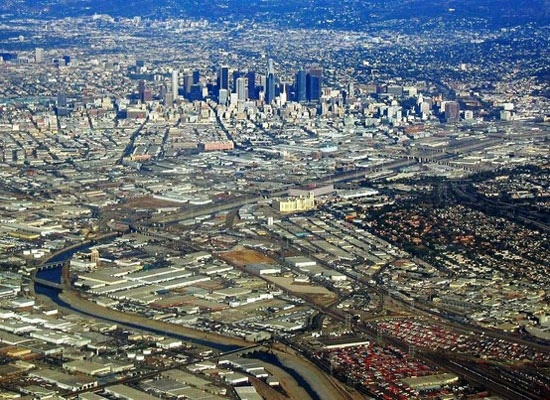

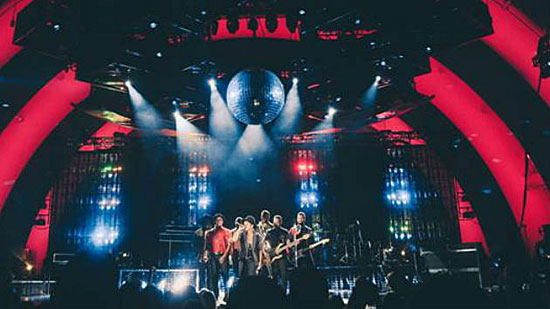

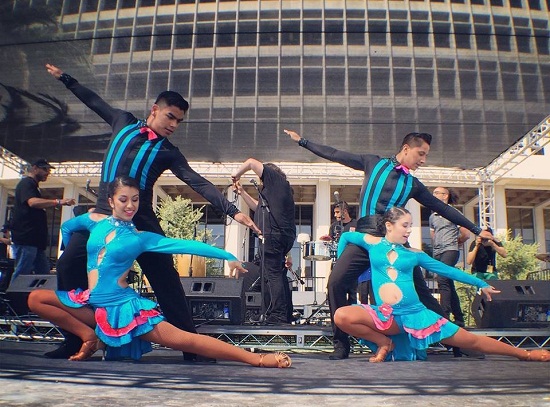






 Check for the latest closure information
Check for the latest closure information








